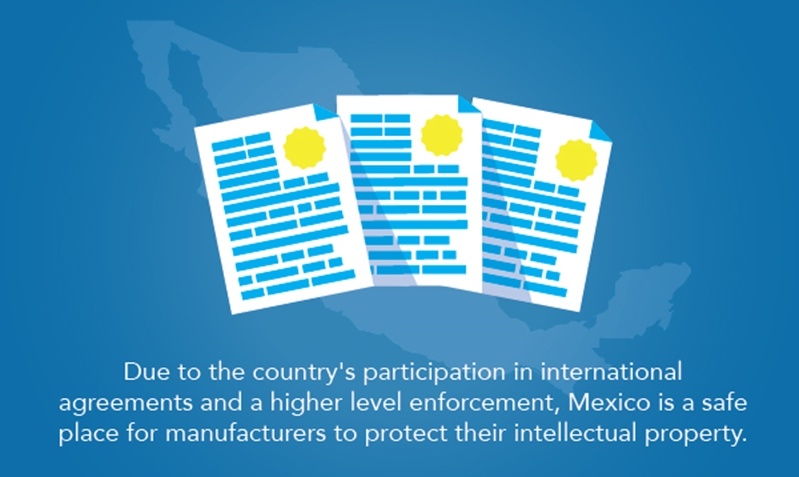Manufacturers are constantly looking for ways to improve their processes, often searching for means of optimization in a world where elements of production are getting more expensive. As the industry continues to change over time, leaders should understand their current state of competitiveness and find methods for improving that factor in the future.
A new study from Deloitte and the Council on Competitiveness, a D.C.-based nonprofit, asked about three dozen manufacturing executives and national laboratory and research facility directors their opinions on what advanced manufacturing technologies were the most crucial to overall growth. Their response?
"Analytics, in a variety of forms, is at the top of the list," Deloitte vice chairman Craig Giffi, said.
The report listed 10 of the most promising manufacturing technologies. In order of importance, they are:
- Predictive analytics.
- Smart, connected products (Internet of Things).
- Advanced materials.
- Smart factories (Internet of Things).
- Digital design, simulation and integration.
- High performance computing.
- Advanced robotics.
- 3D printing and scanning.
- Open-source design/ direct customer input.
- Augmented reality.
We will take a closer look at predictive analytics, the Internet of Things and advanced materials, analyzing their benefits to manufacturing and how Mexico is an ideal environment for both elements to thrive.
Predictive data analytics integral to advancement
Predictive data analytics can serve both individual manufacturers as well as the industry as a whole. Since this factor has been deemed the most important for growth by market leaders, manufacturers will benefit from focusing on elements including artificial intelligence and machine learning. In fact, this market is slated to climb from less than $1 billion in 2013 to $36 billion in 2016, according to the Deloitte report.
Using predictive analytics allows manufacturers to take both a broad and specific look at certain areas of improvement for their industry. According to IT Toolbox, these elements include:
- Quality improvement: New technological software improves much of the analytical process. As a result, manufacturers can store more crucial information about products and the manufacturing procedure in their databases, leading to stronger analysis of the factors that can improve quality.
- Demand forecast: Manufacturers should understand their high- and low-selling periods to ensure resource allocation is correct. Predictive analytics can foresee future sales based on previous purchases by looking at historical data and applying forms of regression.
- Machine utilization: Accuracy and efficiency is key when it comes to machine operation. Predictive analytics combines demand forecast with product mix to increase schedule optimization of machine utilization.
- Preventative factory maintenance: Utilizing machine sensor data, predictive analytics looks at the history of machine failures to pinpoint patterns of problems that could cause a machine to break down. Understanding these flaws allows manufacturers to make the necessary changes or updates to the machinery before they cause issues.
Investing in predictive analytics enables manufacturers to streamline their process, making it less viable to serious problems which could cause downtime and a loss in profits.
"Over time, these IoT-connected machines will become more complex."
Internet of Things gives manufacturing a boost
With advanced software and network connectivity, paired with high-performing sensors, the IoT allows machines to interact digitally. Manufacturers currently use IoT-enabled devices to track assets in their factories, increase analytic functionality through predictive maintenance and consolidate their control rooms, according to Business Insider.
Although the solutions currently is use are still fairly basic, over time these connected machines will become more complex. Manufacturers already invested in IoT are already seeing the results. In fact, these companies saw an increase in revenues by 28.5 percent between 2013 and 2014, according to a TATA Consulting study.
These technologies can help manufacturers become more competitive in their industry. By automating and improving the productivity, maintenance and operation of machines and entire systems, better connecting people to controls to pinpoint efficiency flaws and improvement of supply and logistics management, manufacturers can stay ahead of the currve.
Advanced materials critical to competition
To remain competitive in their industries or to surpass other businesses completely, manufacturers must utilize more advanced materials that offer more strength and are less expensive to produce. The Deloitte/ CoC report listed some important examples of equipment components on the rise in the near future:
- Lightweight metals and alloys: These materials cost less to produce and are expected to increase in market value from $113 billion to more than $138 billion between 2013 and 2019.
- Advanced ceramics and composite materials: Although lightweight, these materials offer stability and strength. The market for these elements is expected to more than double to $56 million between 2013 and 2019.
- Bio-based polymers: These plastics come from renewable sources and will grow from $1.2 billion to $3.3 billion in the coming years.
- Critical materials: Essential to clean energy development, these elements possess magnetic and catalytic properties. The market for these materials is estimated to grow from $7 billion to more than $10 million.
These materials will help manufacturers keep their costs low, while still producing strong and stable products. Furthermore, including these elements in the manufactured goods will help companies remain competitive in their market.
Mexico: Where manufacturers thrive
Companies from around the globe have moved their operations to Mexico. The country offers many advantages to manufacturers looking to improve their level of competitiveness in their market. As the push for big data and advanced materials continues to grow over time, Mexico can provide an environment where these tools can truly thrive, allowing manufacturers to gain exposure in their industry and increase their profits.
Let's take a closer look at some of the aspects of manufacturing in Mexico that can help big data and advanced materials advance in this setting:
- Maquiladoras system: This element of Mexican manufacturing allows factories to import certain materials and equipment in a duty-free and tariff-free environment then export the goods that utilized those specific goods. Manufacturers may find that some of the advanced materials that are less expensive to produce may be included in the list of importable duty- and tariff-free products.
- Commercialization of light fidelity connection technology: According to AlphaGalileo, Mexico is the first country to commercialize LiFi technology, which enables audio, video and Internet transmission of up to 15 megabytes per second through service provider, LedCom. Since LiFi uses visible LED light to transmit data wirelessly, manufacturers can eliminate WiFi and modem signals, allowing them to better utilize Big Data and predictive analytics.
- Labor: To be able to efficiently put Big Data and advanced materials to work, manufacturers need a workforce that is highly educated and skilled. Average labor and manufacturing costs are lower in Mexico than in China and the U.S. and the country has invested in their education infrastructure to ensure future manufacturing employees have all the skills and knowledge necessary to succeed. Today, around three million people are enrolled in postsecondary education and the country has a 93 percent literacy rate, making these employees better able to understand and apply analytics results to their process, according to World Education News and Reviews.
- Participation in the North American Free Trade Agreement: Mexico's participation in NAFTA has significantly reduced barriers and costs to trade and has eliminated tariffs that made it difficult for manufacturers to produce products in a way that didn't cut into their bottom line. Mexico also participates in a number of other free-trade agreements that allow manufacturers to increase their level of competitiveness while continuing to produce goods with reduced or no tariffs or duties.
- Intellectual property protection: Due to the country's participation in international agreements and a higher level of enforcement, Mexico is a safe place for manufacturers to protect their intellectual property. Any documents relating to the results of predictive data analysis or reports detailing ways to improve competitiveness in the market by utilizing advanced materials and Big Data are secure in Mexico.
- Investment in IoT: Since the implementation of devices that utilize IoT are becoming increasingly important in manufacturing, Mexico decided to make an investment in the technology. According to BNAmericas, consultancy company, IDC, revealed the country planned to invest $620 million in the expansion of IoT and devices in 2015. That was an 12.7 percent increase from 2014.
 Mexico's participation in several international trade agreements enables the country to protect intellectual property.
Mexico's participation in several international trade agreements enables the country to protect intellectual property.
A greater focus on predictive analytics, the Internet of Things and advanced materials is changing the face of manufacturing around the world. Companies need to utilize these strategies and technologies to become more competitive in their industry, improve their process and increase their profits.
Today, many manufacturers make the decision to move their operations to Mexico. Due to the country's investment in education and its workforce, Mexico can provide highly skilled labor that will be able to put the findings of Big Data into effect. Furthermore, Mexico's maquiladoras system, commercialization of LiFi, participation in NAFTA, intellectual property protection and investment in IoT gives manufacturers an environment where their businesses can truly thrive.
Subscribe
Sign up and stay informed with tips, updates, and best practices for manufacturing in Mexico.





